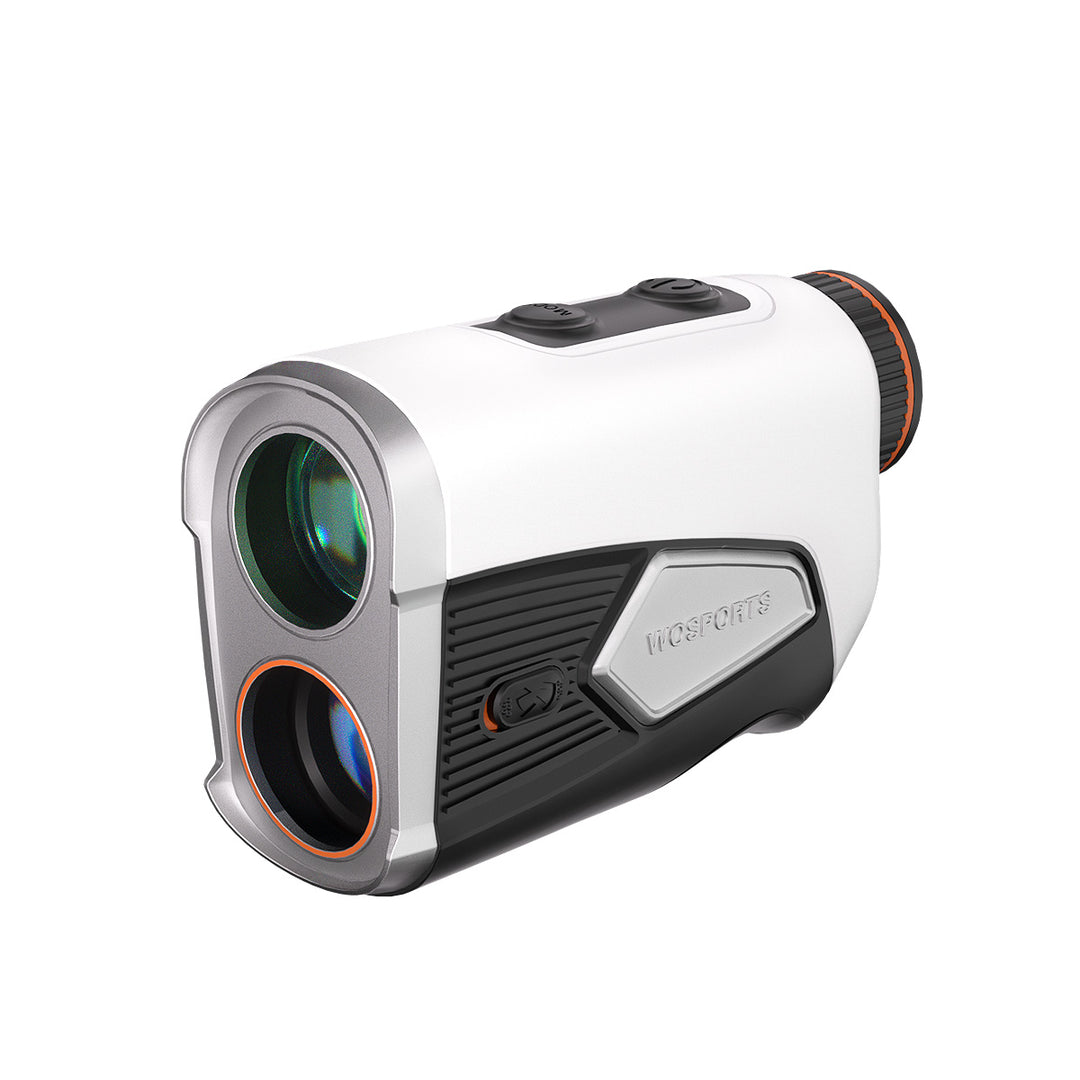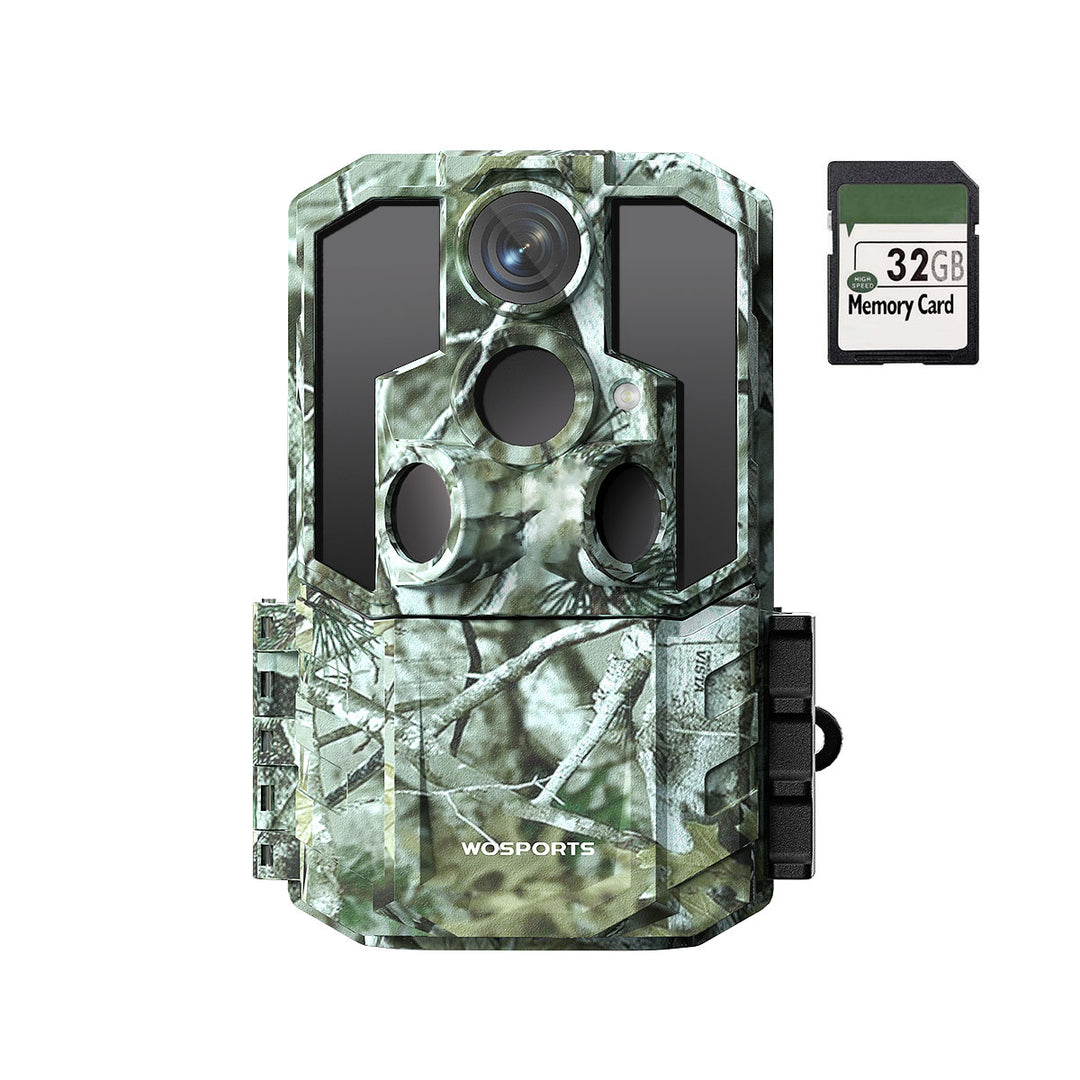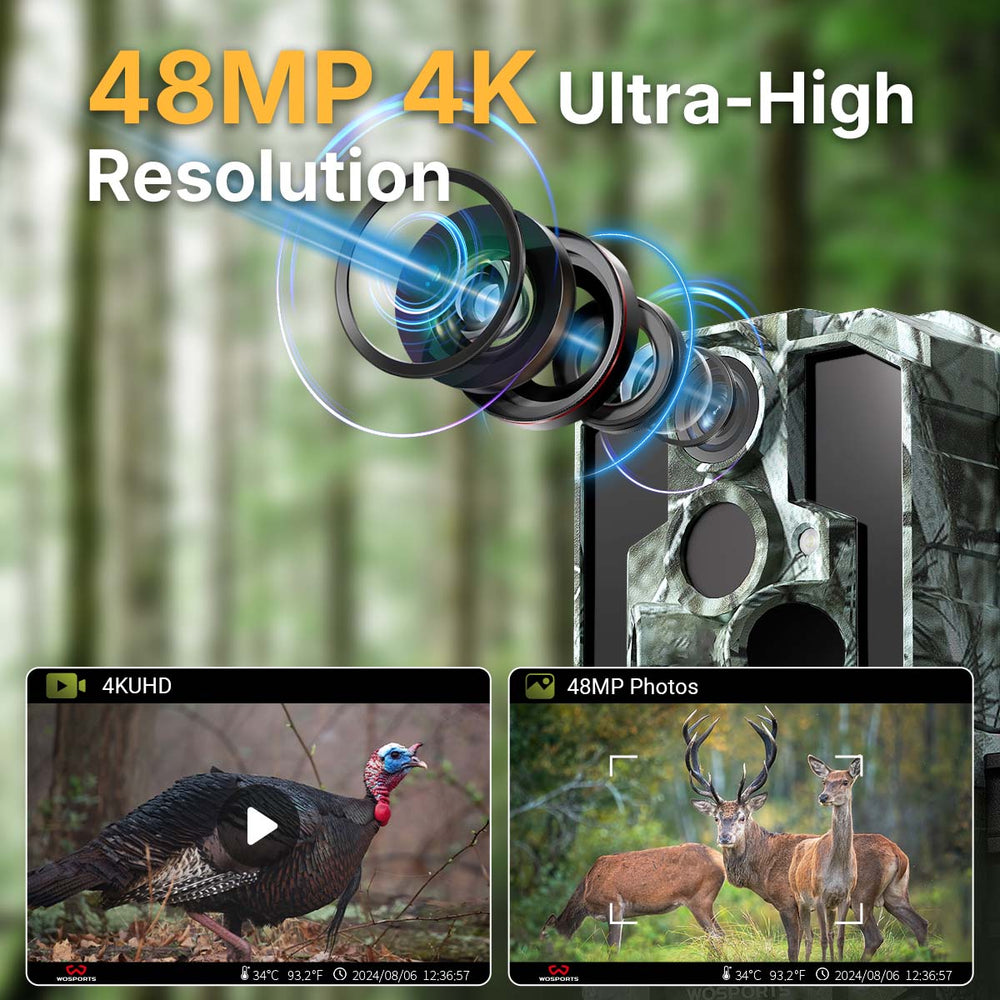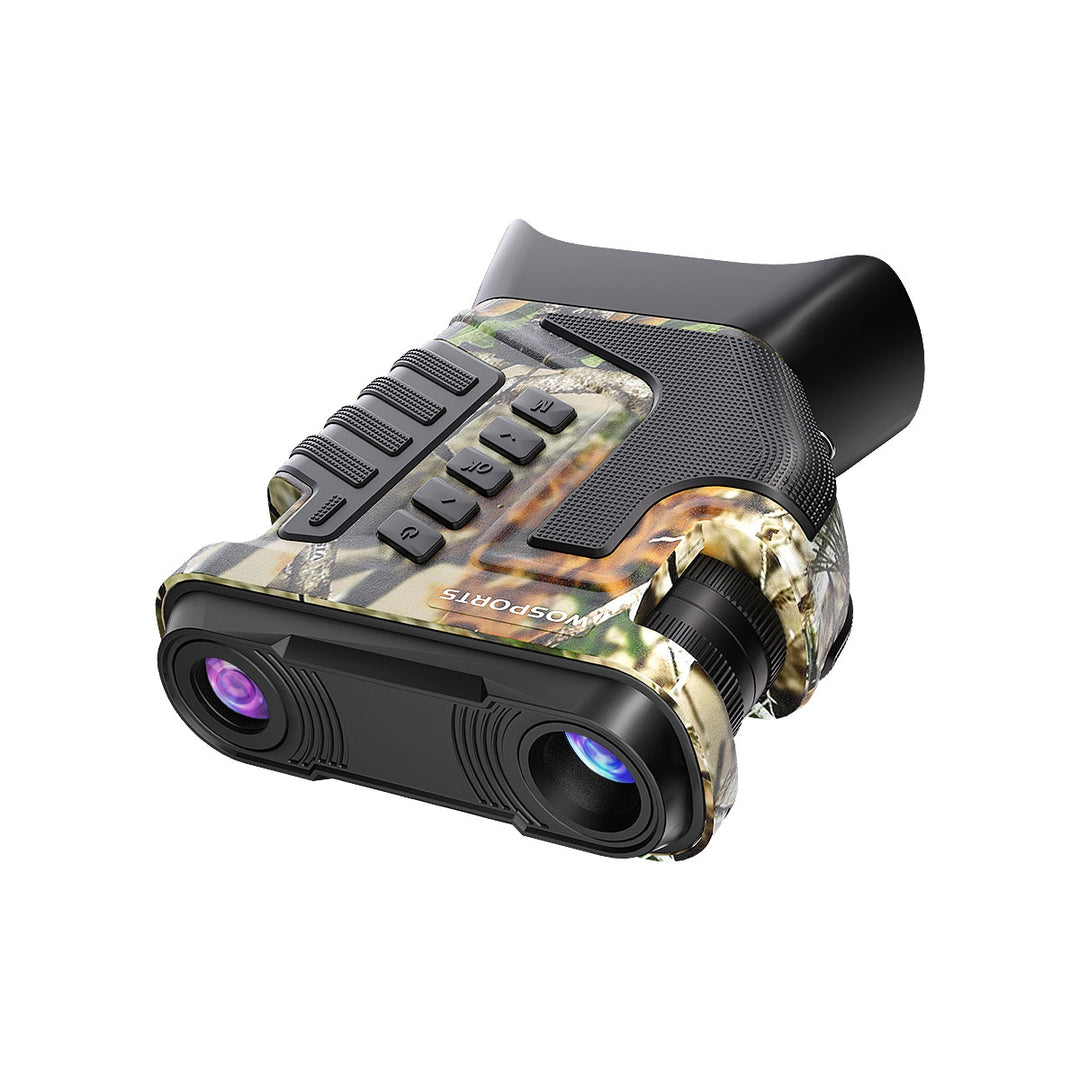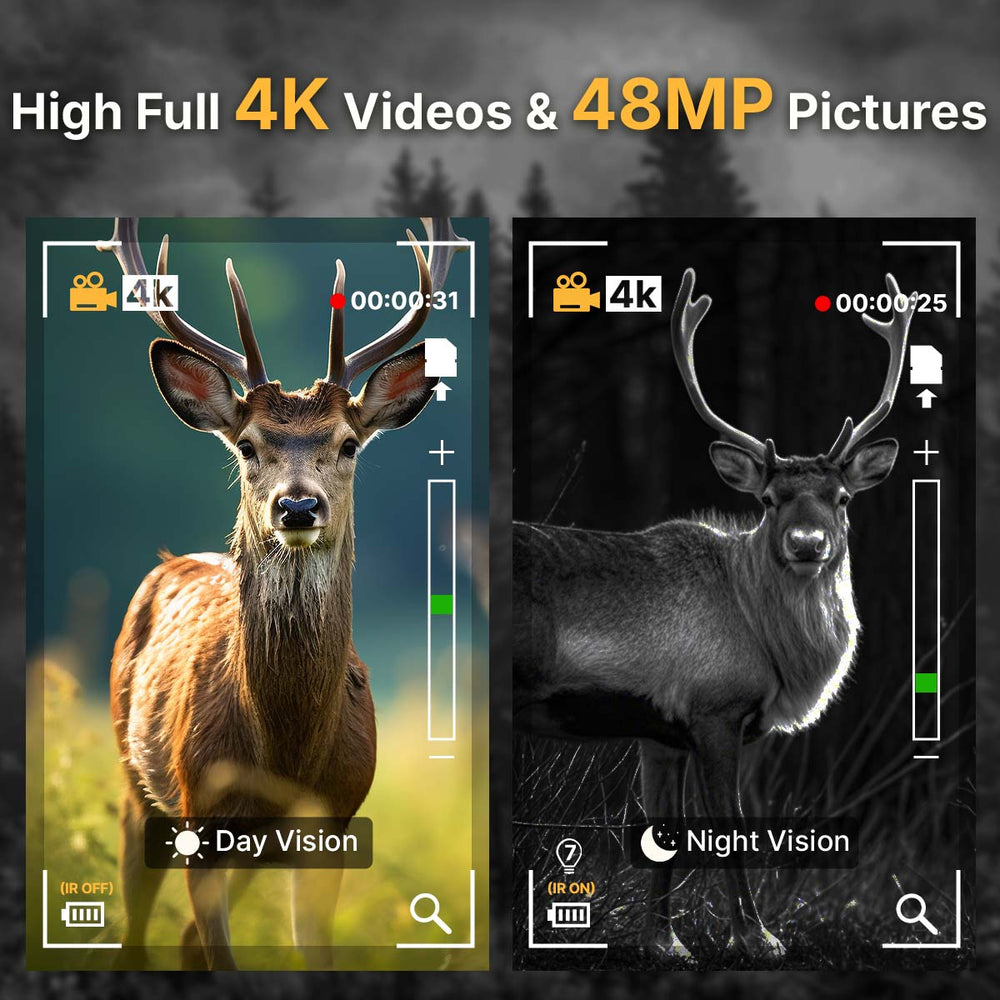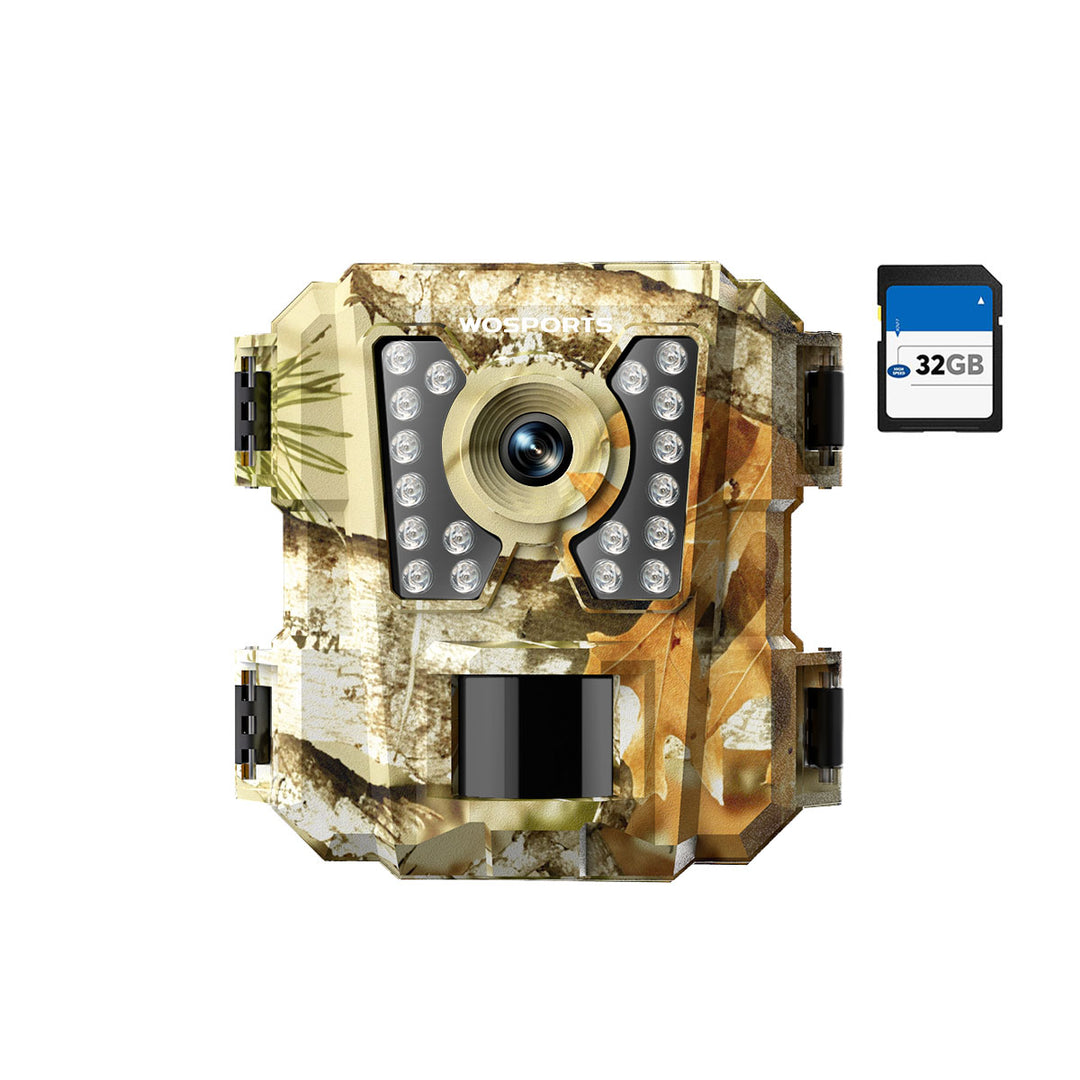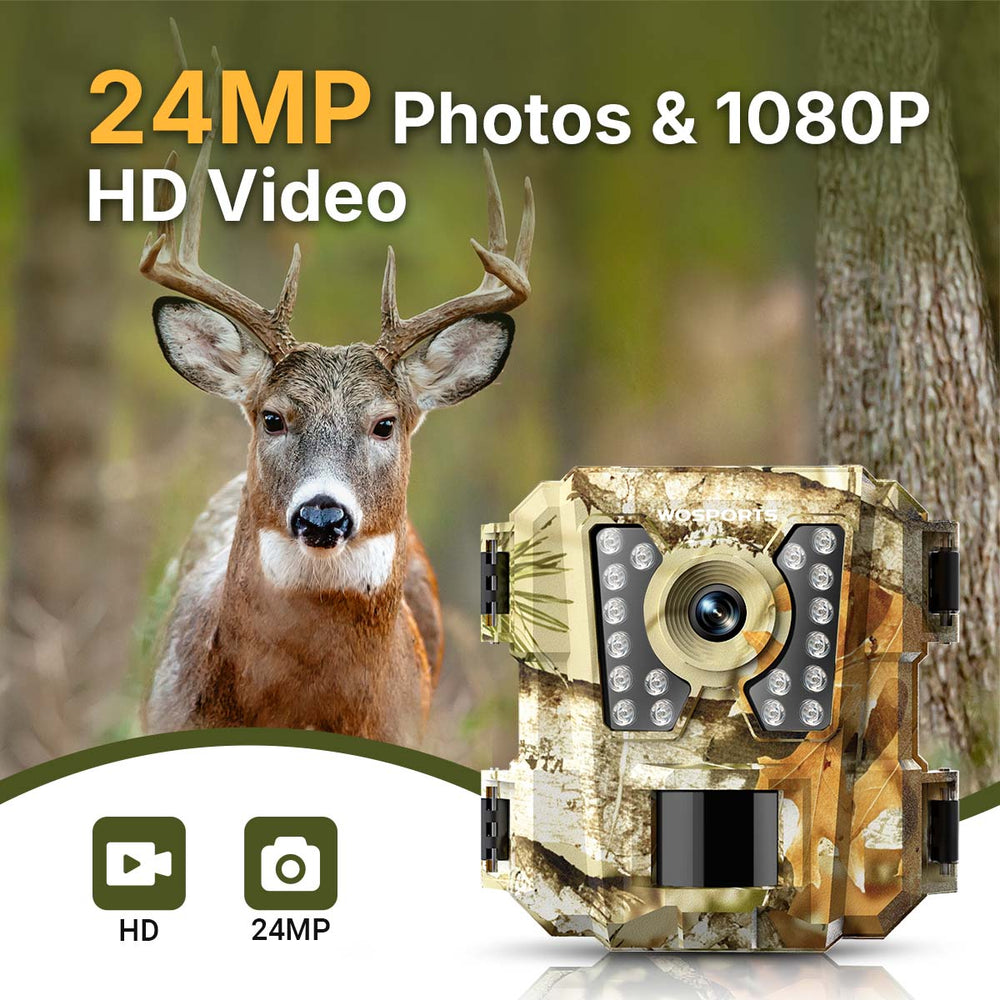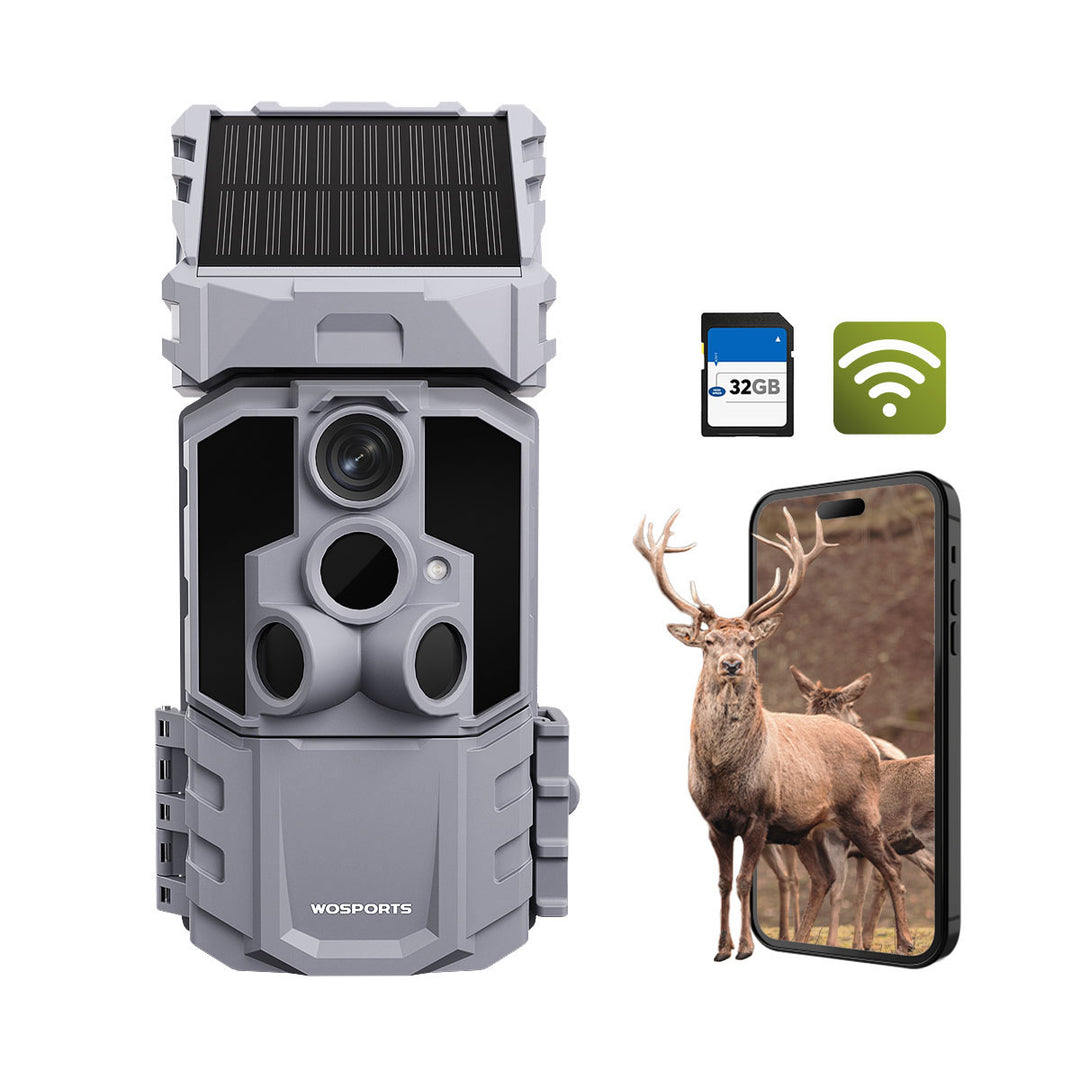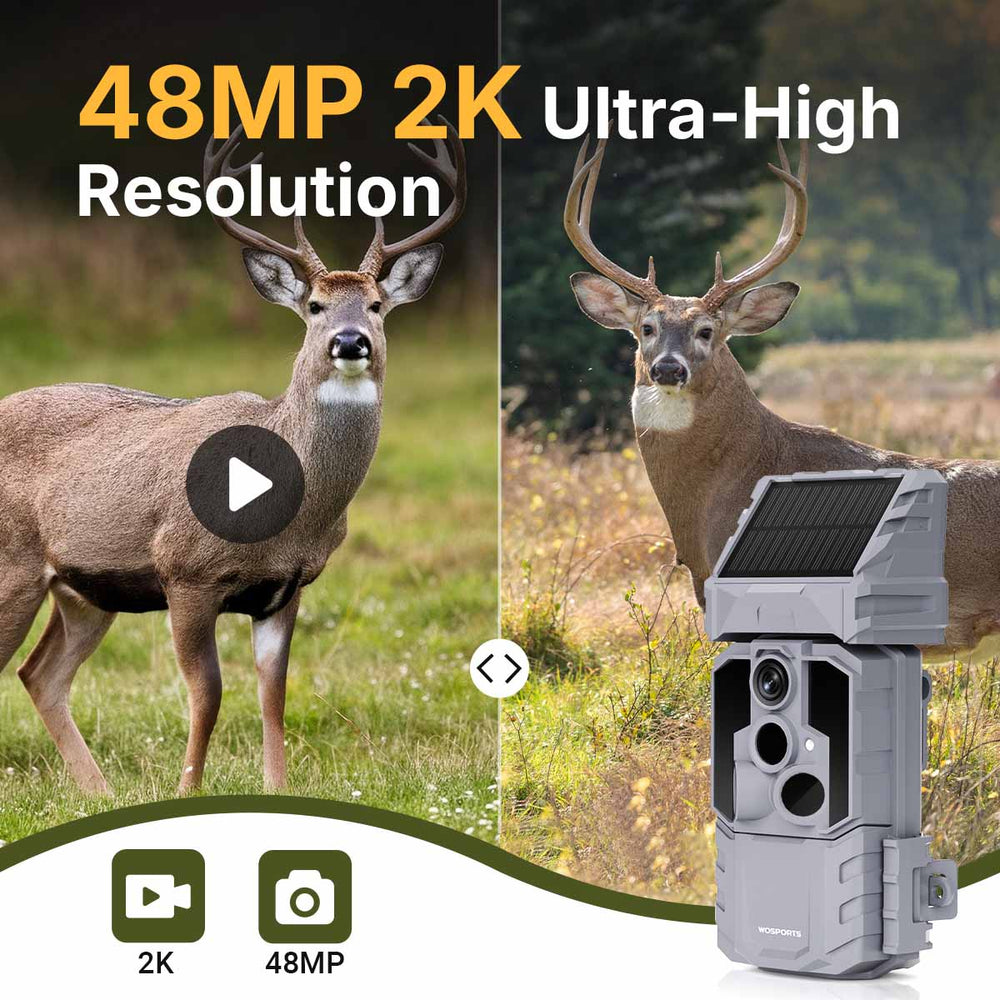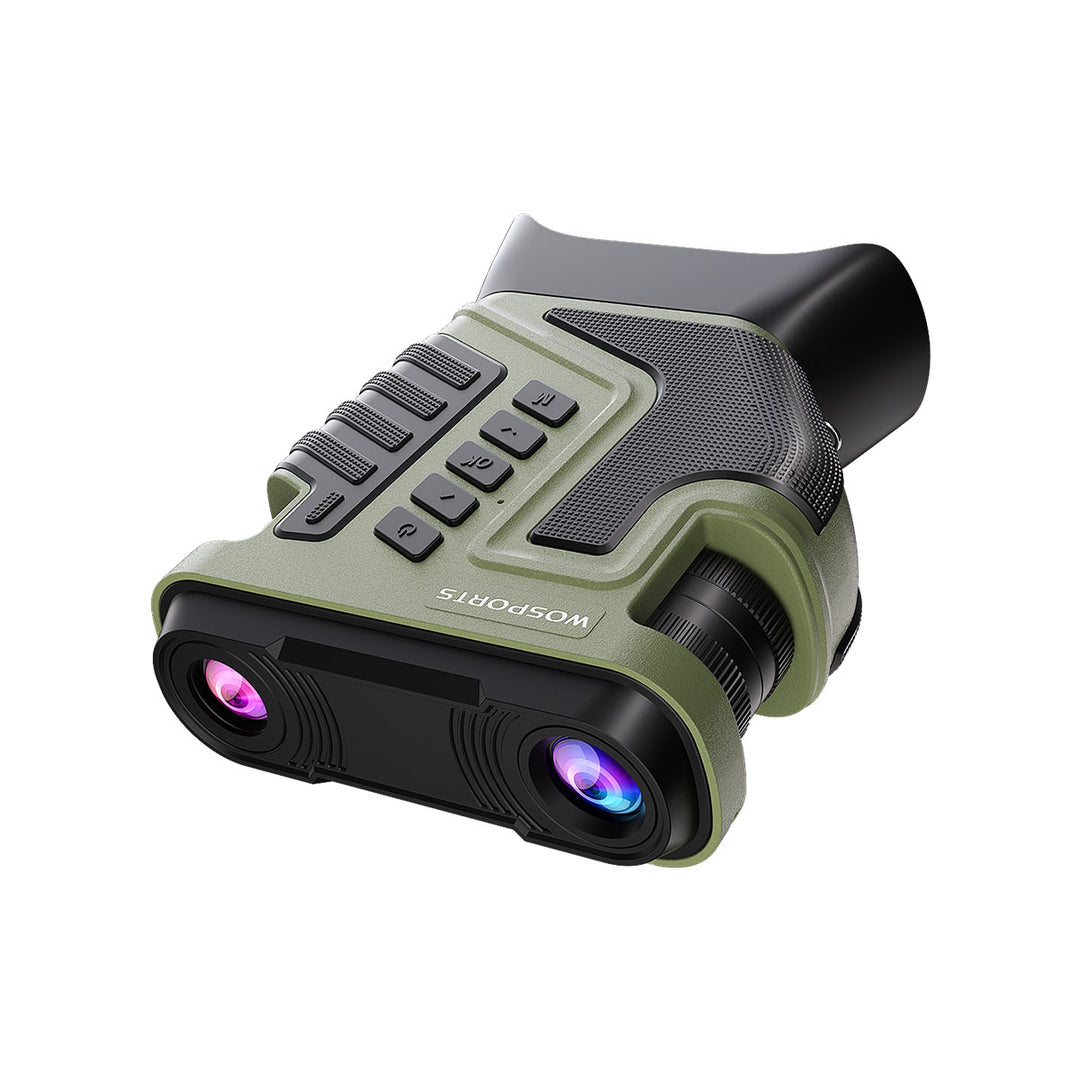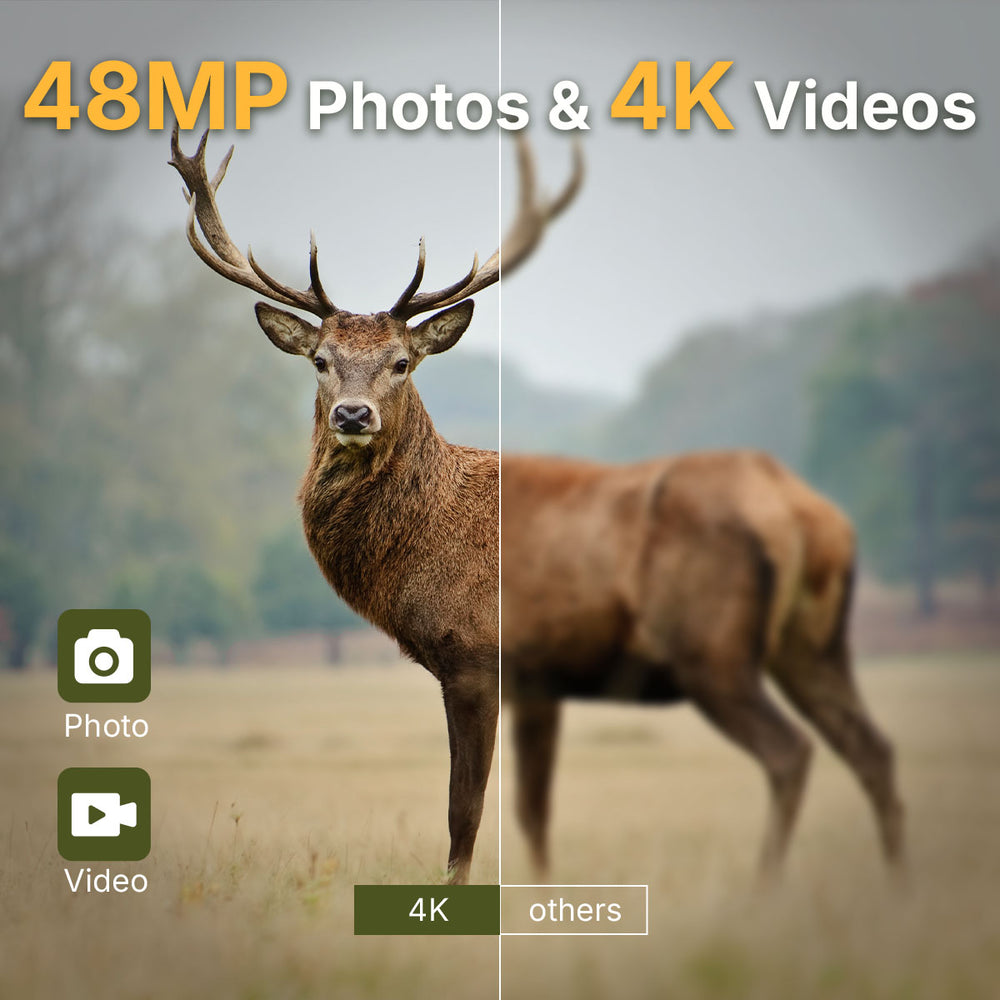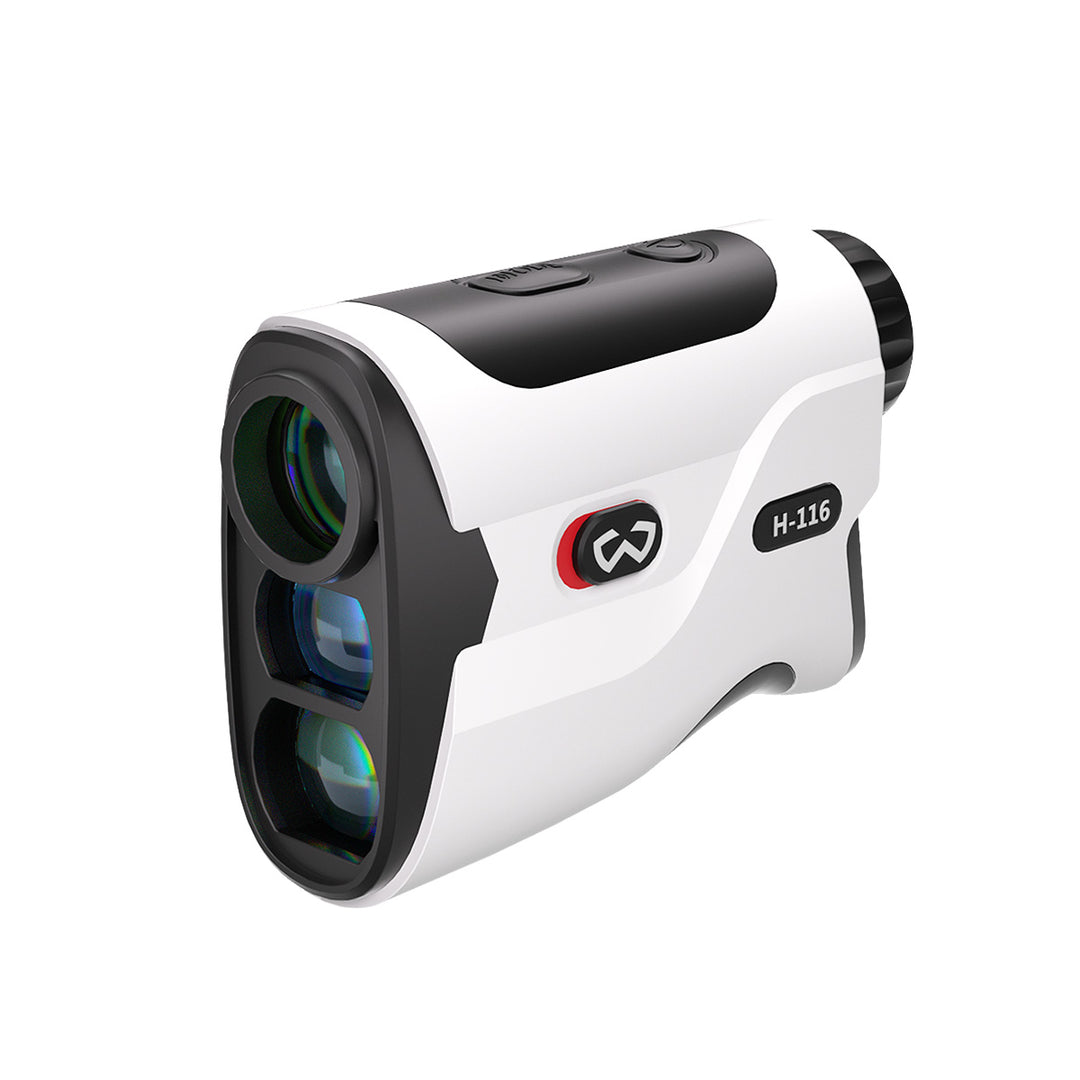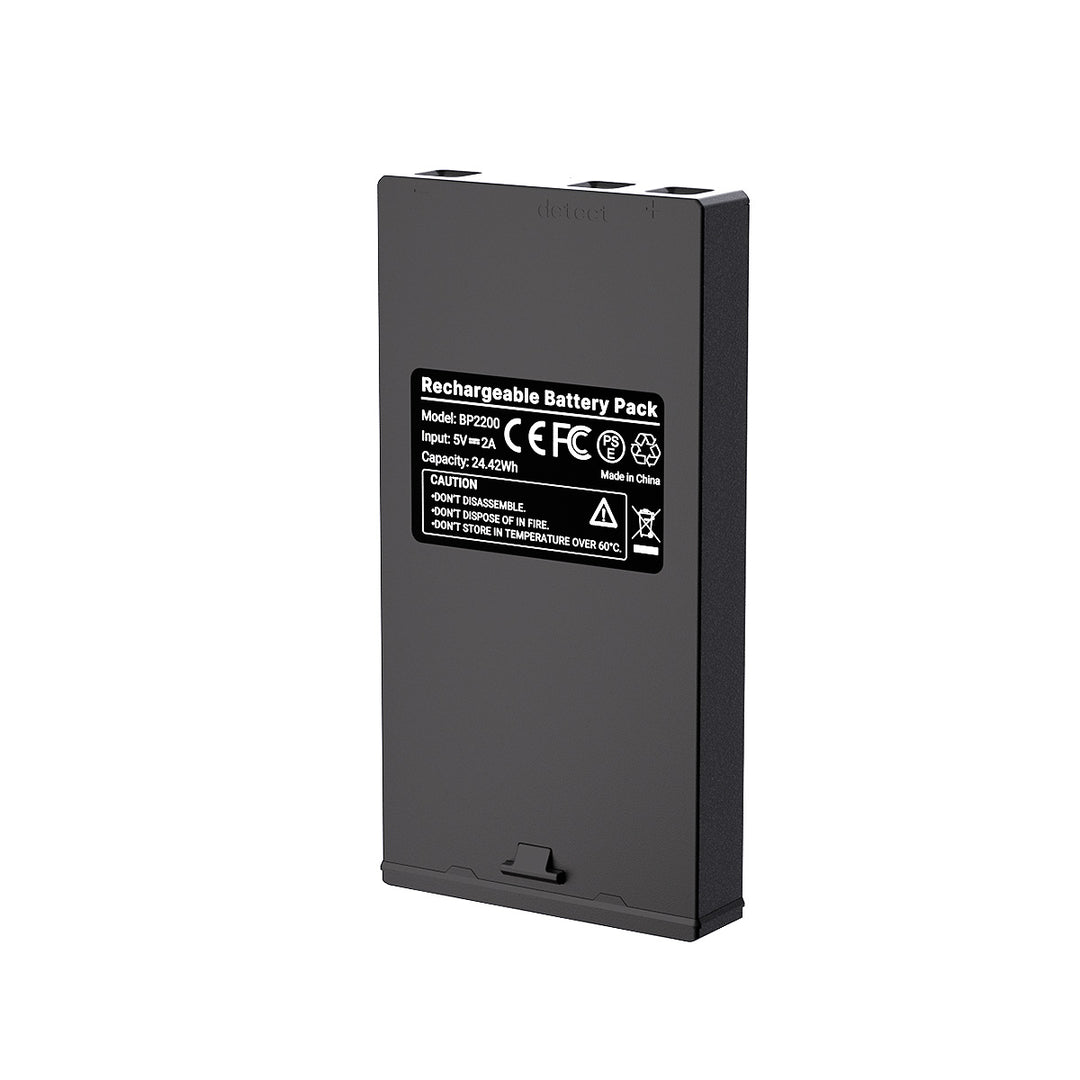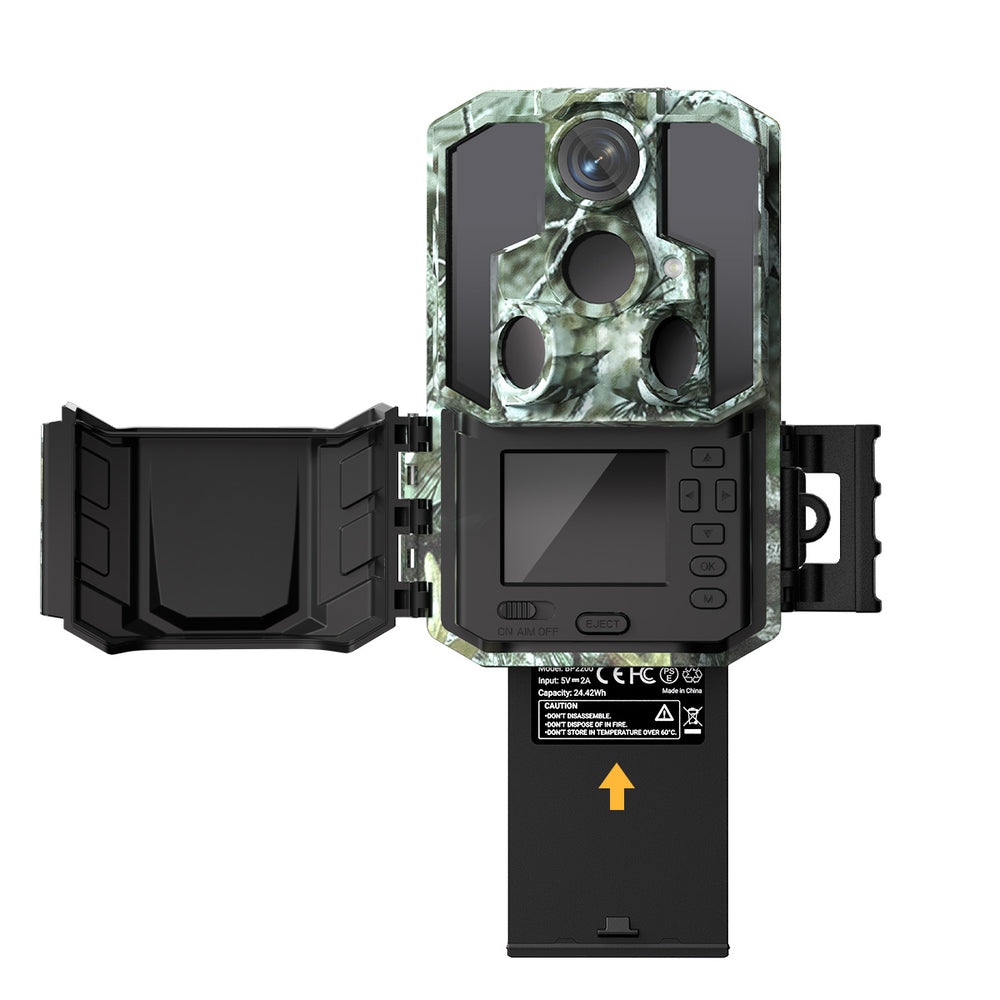How to Use a Trail Camera for Your Backyard
Using a trail camera for your backyard isn’t just for hunters or wildlife researchers — it’s for anyone who loves to see what happens when the yard goes quiet. This guide walks you through how to set up, position, and optimize your trail camera to capture high-quality wildlife photos right in your own backyard.
What Makes a Good Backyard Trail Camera
When picking a trail camera for your yard, you'll want something that can handle the weather, is easy to hide, and simple to work with.
Here are three good choices for backyard use:
G100 Trail Camera: It's small, so it’s easy to hide it with your flowers or garden stuff. It's good if you don't want the camera to be too obvious.

G600 Trail Camera: It has good infrared night vision, so it gets clear nighttime shots without scaring the animals. It’s nice if you like to watch what happens at night.
How to Set Up Your Camera in Backyard
After you've picked your Camera, now the fun starts – figuring out where to put it to get the best shots of your critters. Think of it like setting up little wildlife sets all around your yard.
Here are a few ideas:
Near the bird feeder: Great for catching songbirds, woodpeckers, or even those sneaky squirrels trying to grab a snack.
Along the garden path: You could see foxes, rabbits, or maybe even deer sneaking through when it's dark.
By the water source: A birdbath or small pond can bring in all kinds of animals.
Under trees or by fences: A lot of animals like to use these areas to hide as they move around.
Place your camera about 2–3 feet off the ground and point it down a bit. Keep it out of direct sunlight so you don't get too much glare or accidental recordings. Try to point the camera north or south to keep the sun from messing up your lighting in the morning and evening.

Optimize Camera Settings for the Best Results
Your backyard has changing light, shadows, and motion — so optimizing camera settings matters.
Sensitivity: Medium sensitivity is usually enough to detect animals without constant false alarms.
Photo vs. video mode: Use photo mode for identifying species; switch to short video clips if you want to capture behavior.
Interval time: Set a 5–10 second delay between triggers to prevent your SD card from filling up too quickly.
Resolution: Choose high resolution (16MP or above) for clear details, especially for smaller animals or birds.

Check and Maintain Your Camera Regularly
When your backyard trail camera is set up and working, it takes care of things silently for you — continuously during the day and night. Just like any outdoor equipment, if you take proper care of it, it will last longer and be more reliable.
Once every week or two, if possible, make it your routine to go out and check on your camera. Clean the lens from leaves, spider webs, and dust that might have accumulated there. If it's been raining, then check the seal around the battery case — it should be dry and tight. After a few windy days, you may find that a branch or a patch of tall grass has been in front of the sensor — just a little adjustment can save you from many false triggers.
And you need to check batteries and memory card space regularly. This is also an opportunity to change batteries and format the SD card.

Create a Wildlife-Friendly Backyard
As soon as you start observing the various creatures that come to visit, you will be able to make your yard even more attractive. A friendly atmosphere is a win-win situation for both you and the animals.
Try to implement some of these suggestions:
Bird feeders or nesting boxes can be put up for giving the birds a place to stay and visit all year round.
By providing a shallow water dish, you can cater to the small mammals and birds.
Plant native flora and shrubs that can both serve as cover and food for the animals.
Make a point to keep one part of the yard a bit “wild” — tall grass or brush piles will not only be of less aesthetic value but also attract the good insects and the small critters.
Reduce the application of pesticides and keep your outdoor lighting to a minimum during the night.
These uncomplicated measures will turn your backyard into a secure and vibrant space where wildlife flourishes, and your trail cameras will be there to record the action.
Capture More with Multiple Cameras
Search
Popular Posts
Recent Posts

Nov 28, 2024
Troubleshooting Common Trail Camera Issues
Jan 10, 2025
Why Does My Trail Camera Stop Working at Night?

































